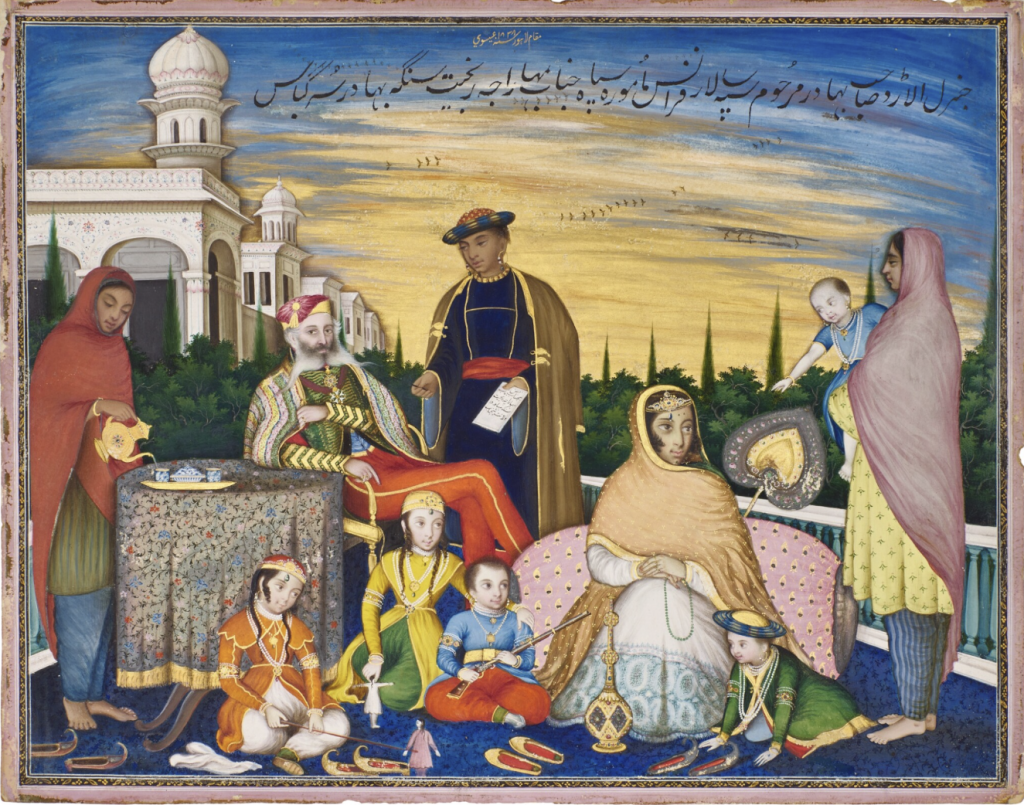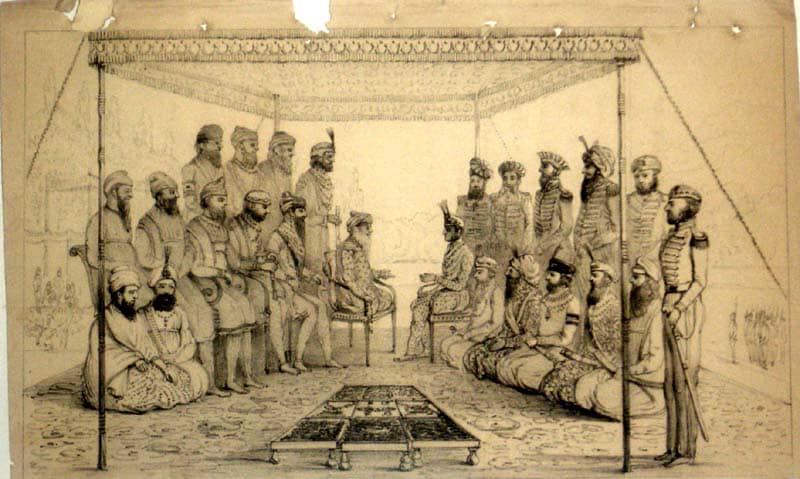Explore Bhai Mani Ram's enduring legacy, a Sikh hero whose sons embraced martyrdom for faith. Learn about his profound spiritual journey and sacrifices.
OMS (d. 1828), a Spaniard, also known as Amise, Musa Sahib, Urns and Hommus, served in Maharaja Ranjit Singh`s army. As a young man, he had enlisted in Napoleon`s artillery. After France`s defeat in 1815, he set out on his travels and reached Persia where he obtained employment declaring himself to be a Frenchman. He left Persia in 1824, reaching Lahore in 1826. He took up service under Maharaja Ranjit Sihgh on a salary of Rs 1,200 per month and was given command of two battalions of infantry and a regiment of cavalry.
ALLARD, BENJAMIN (1796-1877), step-brother of General Allard, born at Saint Tropez in 1796, was sent to Lahore in 1829 in order to replace his brother as the military adviser of Maharaja Ranjit Singh, but the two brothers failed to win the confidence of the Maharaja, who would not release General Allard from his duties. Benjamin then acted as his brother\'s deputy for various commercial missions between Lahore and Calcutta, along with Falcon and Meifredy.
Explore the adventurous and tumultuous life of Benoit Argoud, a quarrelsome Frenchman who joined Maharaja Ranjit Singh's infantry in 1836.
Discover the story of Basava Singh, a key figure in the 1848-49 revolt against British rule in Punjab, aligning with Bhai Maharaj Singh for freedom.
BHIVA, BHAI, and his brother, Rup Chand, businessmen of Sirhind, were devout Sikhs of the time of Guru Arjan. They lived honestly, celebrated the Sikh festivals, and entertained their brethren faith on such occasions. Once a Mughal came to deposit with them gold mohars hid in a hollow piece of bamboo. They put away the bamboopiece for safe custody, but forgot to make an entry of the deposit in their books. The Mughal returned after five years to claim the deposit.
BHUPAL SINGH, a son of the Gurkha general, Amar Singh Thapa, came to Lahore and took up service under Maharaja Ranjit Singh (1780-1839). He became an officer in a battalion in the Sikh army under General Ventura. In 1838, Bhupal Singh returned to Nepal and was appointed to command a check post on the Indo Nepalese border. Two years later he was selected to lead an embassy to Lahore. He left Kathmandu on 6 June 1840, but the mission returned without transacting much business owing to the death in Lahore of Kanvar Nau Nihal Singh.
BROWN, JOHN, alias RICHARD POTTER, an Englishman, who, deserting the East Indian Company`s service in the Bengal artillery, came to Lahore and joined the Sikh artillery in 1826. He was later promoted colonel and placed in charge of the artillery depot at Lahore. During the first Anglo Sikh war, he acted as a British spy. Just before the battle of `Aliwal, he went to Ludhiana and offered his services to his countrymen.
DE LA FONT, CAPTAIN AUGUSTE, a Frenchman, who entered Maharaja Ranjit Singh`s service in 1838. He was appointed an aide decamp to General Ventura. Later, he acted as a staff officer to Colonel C.M. Wade during his journey to Kabul. He took active part in the action at Fort `All Masjid and was also helpful in maintaining peace between the Sikh contingent and Wade`s "somewhat unruly" force. He left service in the Punjab in 1843 and returned to France. His younger brother (Christian name not known) also served in the Sikh army under Generals Avitabile and Ventura.
FATEH SINGH AHLUVALIA (d. 1836), son of Bhag Singh, and a grandnephew of Jassa Singh Ahluvalia, leader of the Ahluvalia misi and of the Dal Khalsa, who in 1758 proclaimed the sovereignty of the Sikhs in the Punjab. Fateh Singh succeeded to the Ahluvalia chiefship in 1801. He was the chosen companion of Maharaja Ranjit Singh, with whom he in 1802 exchanged turbans in a permanent bond of brotherhood. Fateh Singh took part in almost all the early campaigns of Ranjit Singh Kasur (1802-03), Malva (1806-08), Kangra (1809), Multan (1818), Kashmir (1819) and Mankera (1821). He fought in the battle of Haidru (1813) and held command in the Bhimbar, Rajauri and Bahawalpur expeditions.
- 1
- 2




